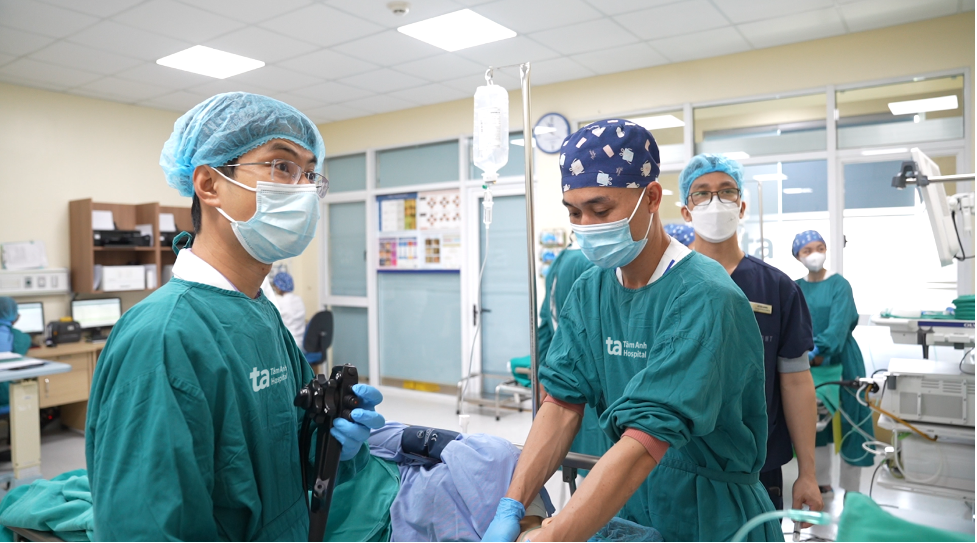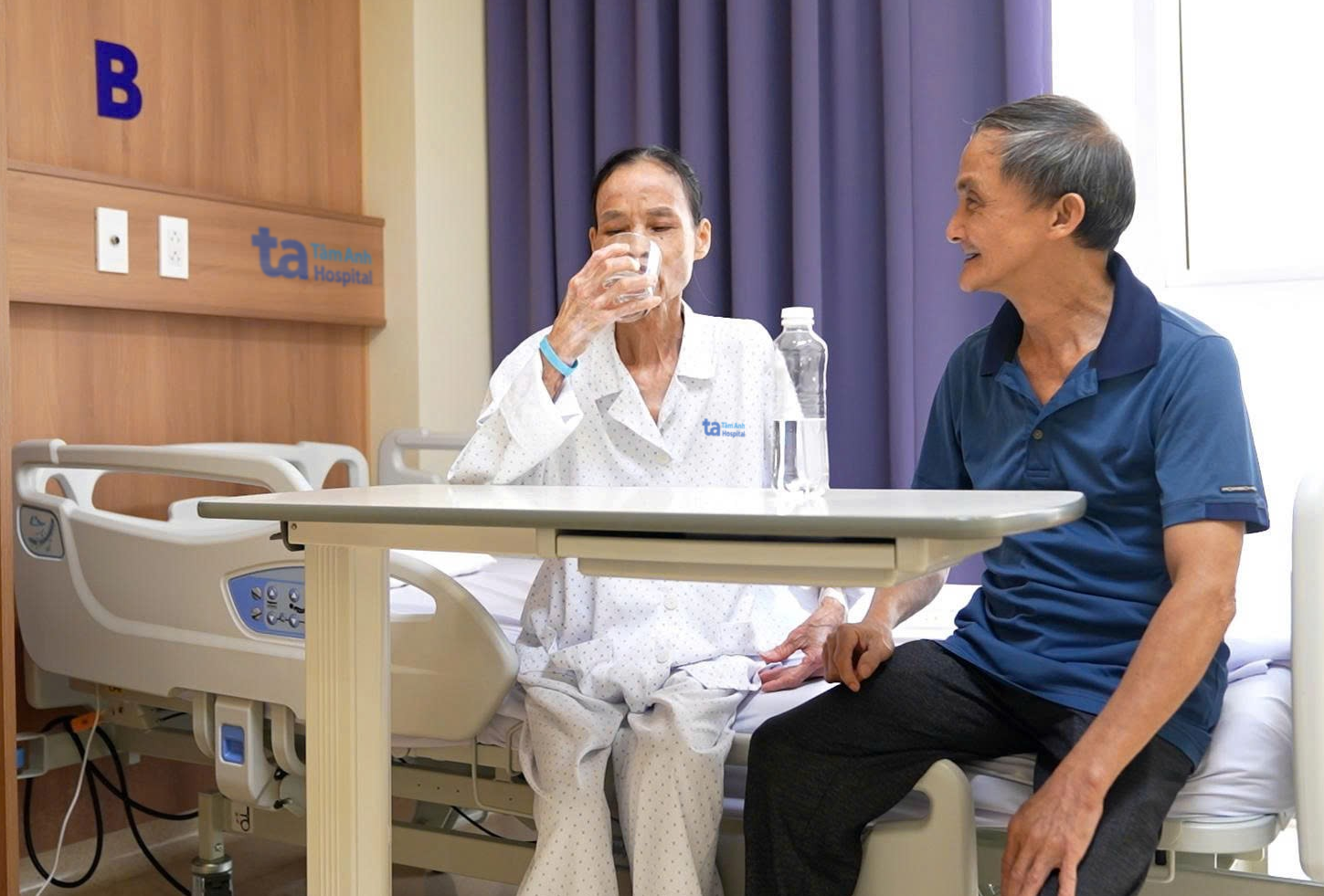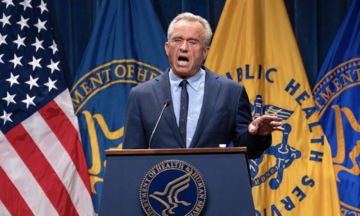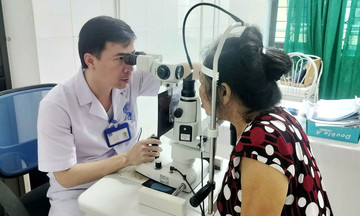Results of an esophageal motility study at Tam Anh General Hospital in Hanoi revealed that Hien had a classic esophageal spasm. This is a condition where the lower esophageal sphincter doesn't open when swallowing, causing food and liquids to become trapped in the esophagus.
30 years ago, Hien suffered severe burns, causing fibrosis and stiffness in the muscles of her throat and esophagus, thus impairing her swallowing ability, according to Doctor Dao Tran Tien, Deputy Head of the Gastroenterology Department. As her ability to regulate swallowing decreased, food and liquids easily accumulated in her esophagus, causing her discomfort and making it difficult to eat or drink. She had to rely on a feeding tube for sustenance.
When Hien arrived at Tam Anh General Hospital, she weighed 25 kg, with a body mass index (BMI) of 12, indicating dangerous underweight. Doctor Tien said that if this condition persisted, it could further distend and deform her esophagus, leading to recurrent aspiration pneumonia from accumulated food and fluids.
Esophageal dilation with a balloon is a common treatment for this condition. However, for Hien, this method could be less effective because her already enlarged esophagus carried a risk of tearing if the pressure wasn't carefully controlled. Open surgery could have addressed the issue completely, but given her severe debilitation, this invasive method posed high risks and a low chance of recovery.
After consultation, the medical team opted for peroral endoscopic myotomy (POEM), a minimally invasive procedure with a quick recovery time. POEM allows for precise control of the cutting depth and range using endoscopic images, minimizing complications. This made it suitable for Hien's weakened state and deformed esophagus. However, the team acknowledged the challenges of performing POEM on a severely debilitated patient like Hien, as her muscle and fat tissues had atrophied, increasing the risk of bleeding, esophageal perforation, and muscle tearing during the procedure, which could lead to mediastinitis or peritonitis. Her enlarged, pouch-like esophagus also made it difficult for doctors to determine the correct approach.
 |
The endoscopic team performing the esophageal myotomy to treat Hien's esophageal spasm. Photo: *Tam Anh General Hospital* |
The team used a guidewire system to visualize the path within the endoscopic tunnel and precisely locate the area for the myotomy. Due to the thin and weak muscle wall, the doctor had to cut small layers of muscle, avoiding wide or deep cuts to prevent complications. At the cardia, the doctors also calculated the incision to be just enough to relieve the spasm while minimizing the risk of gastroesophageal reflux after the procedure.
Post-procedure, the previously constricted cardia opened significantly, eliminating food and fluid buildup in the esophagus. After two hours, Hien could drink water almost normally and eat thin porridge on the first day. By the second day, she could eat pho, and on the third day, she could consume soft foods.
 |
Hien can eat normally after treatment. Photo: *Tam Anh General Hospital* |
While Hien can eat normally, she needs to avoid spicy and acidic foods, as well as stimulants like alcohol, beer, coffee, and carbonated drinks to prevent reflux. She should also avoid overeating, initially consuming about 70% of her usual intake per meal to allow her stomach and esophagus time to adjust and prevent bloating and indigestion. High-protein foods, milk, and easily digestible nutrients are recommended for a faster recovery.
Esophageal spasm is an esophageal motility disorder that often develops silently and slowly. It's difficult to diagnose in the early stages and is often mistaken for gastroesophageal reflux disease or esophageal cancer. Doctor Tien advises individuals experiencing persistent dysphagia, unexplained weight loss, or regurgitation of old food to seek early consultation with a gastroenterologist. Esophageal manometry can help confirm esophageal spasm and differentiate it from other motility disorders.
Ly Nguyen
| Readers can submit questions about digestive diseases here for doctors to answer. |












